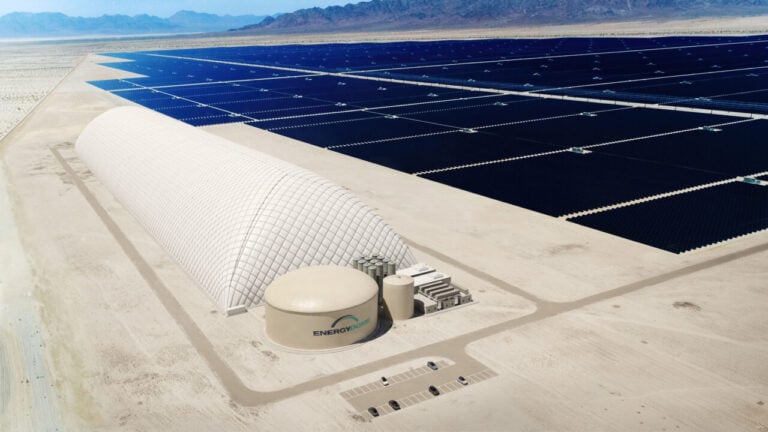The project will be delivered on a turnkey basis by India-headquartered Triveni Turbine and Italian technology provider Energy Dome. NTPC said its R&D wing, NTPC Energy Technology Research Alliance (NETRA), will collaborate with Triveni Turbine and Energy Dome on the project, noting that it will be a long-duration energy storage (LDES) asset, although the duration and megawatt output were not provided in announcements.
The CO2 Battery stores energy through adiabatic compression of carbon dioxide gas, liquefied during charging and evaporating during discharge in the thermodynamic Brayton Cycle. Heat creating the compression process is stored and used to expand the CO2 gas, which is driven through turbines to generate electricity, in a closed-loop cycle.
NTPC chairman and managing director Gurdeep Singh described the project as a “landmark development in the domain of long-duration energy storage.”
Singh added that NTPC recognised the CO2 Battery has several advantages over other technologies, particularly lithium-ion (Li-ion) batteries, in having an expected lifetime in excess of 25 years without performance degradation even at “very high depth of discharge” and in not requiring critical minerals. Unlike pumped hydro energy storage (PHES), the CO2 Battery tech is also topography agnostic, Singh said, and therefore easier to find sites on which to build projects.
Energy Dome is the holder of the IP for the technology, claiming it is simple to install and safe to use, and can be assembled using off-the-shelf components and with techniques adapted from existing industries.
In comments sent to Energy-Storage.news, Energy Dome founder and CEO Claudio Spadacini—the CO2 Battery’s inventor—said that it is currently “the only commercially viable alternative to lithium—apart from pumped hydro—and our technology fundamentally relies on the cost of steel, making it a truly stable, predictable, and more sustainable solution.”
“Moreover, our supply chain is built around components widely used in the energy and process industries worldwide, allowing us to be flexible in the face of geopolitical tensions or potential tariff disputes,” Spadacini said.
Energy-Storage.news has reached out to Energy Dome regarding the project’s planned megawatt output and discharge duration and will update this story in due course on receipt of a response.
CO2 Battery fits Indian government aims, Energy Dome claims
Energy Dome also noted that the adoption of its technology aligns with Indian government policy strategies including the ‘Make in India’ drive for domestic production and ‘Atmanirbhar’ strategy of increasing India’s self-reliance.
Its products can be assembled locally in the regions where it is being deployed, the company claims, rather than relying on delivery from centralised gigafactories as battery storage systems and their components typically are.
NTPC launched a tender for the project in October last year, seeking either: a technology provider bidder which owned the technology for ‘Energy storage based on closed thermodynamic cycle using CO2 as working fluid,’ and with experience of at least one commissioned project of 1MW/1MWh in operation, or a project company with experience of large-scale power, energy storage, chemical plant, process plant, turbine, compressors or similar, with a valid license agreement for the technology.
In June last year, NTPC launched a tender for a 600kW/3,000kWh flow battery project to be installed at its NETRA R&D premises in the Greater Noida region of Uttar Pradesh.
For Energy Dome, it marks the latest entry into a new market following the signing of contracts in October for its first 200MWh project in the US with utility Alliant Energy in Wisconsin.
To date, the company has built one megawatt-scale commercial demonstration project in Sardinia, Italy, a 2.5MW/4MWh system which went into operation in 2022. Energy Dome also picked Sardinia for the site of its first 20MW/200MWh (10-hour duration) CO2 Battery, and signed a tolling agreement offtake contract with French multinational utility Engie for it in December.
According to Energy Dome, the 200MWh Sardinia project and 200MWh Wisconsin project will be mechanically identical, which the company claimed is evidence of the technology’s easy-to-replicate design features.
CEO Spadacini told Energy-Storage.news that Energy Dome expects 2025 to be “an important year.”
“We’ll definitely and completely be moving away from the technology development phase to full-scale commercial deployment,” Spadacini said.
“It will also be a key turning point for the long-duration energy storage (LDES) sector as Energy Dome begins rolling out its first commercial projects.”

